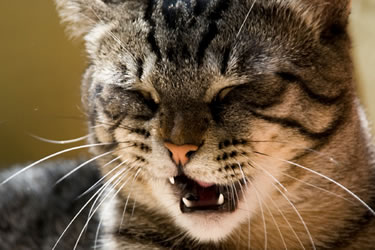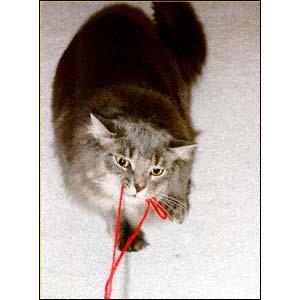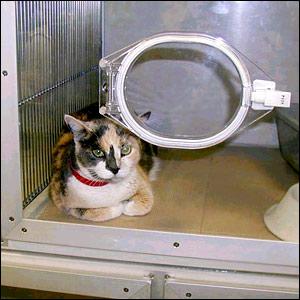Malabsorption in Cats
Cats
Overview of Feline Malabsorption
Malabsorption refers to deficiency in the absorption of one or more nutrients in the gastrointestinal tract as a result of disruption of the normal process of digestion and absorption. Digestion and absorption of nutrients occur in three sequential phases: intraluminal digestion, mucosal digestion and absorption, and delivery of nutrients to the circulation. Many diseases cause chronic malabsorption by interfering with these processes in cats.
Some of these include:
Inflammatory bowel disease, a microscopic infiltration of the intestinal wall with inflammatory cells. The cause is unknown, although it is suspected to have an immune basis. Intestinal neoplasia, such as lymphosarcoma, adenocarcinoma and leiomyosarcoma Intestinal bacterial overgrowth, which is characterized by an overgrowth of normal intestinal flora (bacteria) usually secondary to various gastrointestinal diseases, but occasionally as a primary entity. Infectious enteropathies, such as bacterial, viral, fungal, parasitic, rickettsial Short bowel syndrome, which is created after a large portion of the intestinal tract is resected for any number of reasons. The remaining bowel is incapable of functioning normally, and malabsorption often develops. Lymphangiectasia, which is an obstructive (blockage) disorder involving the lymphatic system of the gastrointestinal tract. This results in protein being lost through the gastrointestinal tract and causes profound hypoproteinemia or low protein levels. Villous atrophy (wheat-sensitive enteropathy)
What to Watch For
Depending on the underlying cause, different breeds and ages are affected. There is a tremendous variation in spectrum and severity of signs.
Soft stool or watery diarrhea Greasy stools Stools containing undigested food Increased frequency of defecation and stool volume Weight loss Increased or decreased appetite Depression Abdominal discomfort Borborygmus (noise coming from the gastrointestinal tract) Flatulence (gas) Vomiting Diagnosis of Malabsorption in Cats
A thorough knowledge of history and clinical signs is very important and is most helpful in the diagnosis of malabsorption. The following diagnostic tests may also be necessary for your cat:
Complete blood count (CBC) Biochemical profile Urinalysis Fecal examination Fecal bacterial cultures Abdominal radiographs (x-rays) Radioimmunoassay of serum trypsinlike immunoreactivity (TLI), a blood test to rule out exocrine pancreatic insufficiency, a maldigestive disorder that often presents with similar signs Folate and cobalamin (vitamin B12) levels, which are blood tests that assess for malabsorption and bacterial overgrowth Endoscopic examination and biopsy
Treatment of Malabsorption in Cats
Treatment should be directed at the underlying cause, as different disorders require different therapy. Treatments for your cat may include:
Dietary modification Pancreatic enzyme replacement Antibiotic therapy Anti-inflammatory therapy Chemotherapy Home Care
Administer prescribed diet and medication. Follow your cat closely for resolution of symptoms, especially diarrhea and body weight. If improvement is not appreciated over the first week or two, contact your veterinarian.
There is no preventative available for malabsorptive disorders.

 Bald Spots on Cats
Bald Spots on Cats Bald spots are a common occurrence in cat
Bald Spots on Cats
Bald Spots on Cats Bald spots are a common occurrence in cat
 Pain Relief for Cats with Arthritis
Pain r
Pain Relief for Cats with Arthritis
Pain r
 Sneezing and Nasal Discharge in Cats
Sneezing and Nasal Discharge in Cats
Sneezing and Nasal Discharge in Cats
Sneezing and Nasal Discharge in Cats
 Vomiting in Cats
Vomiting in Cats
Vomiting in Cats
Vomiting in Cats
 Dyspnea (Trouble Breathing) in Cats
Dyspnea (Trouble Breathing) in Cats
Dyspnea (Trouble Breathing) in Cats
Dyspnea (Trouble Breathing) in Cats